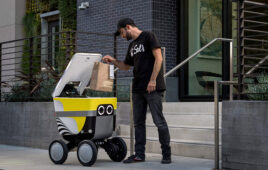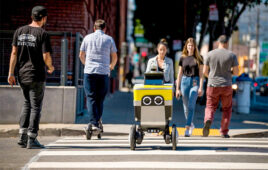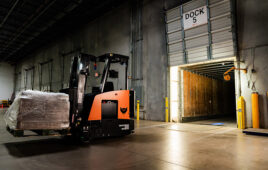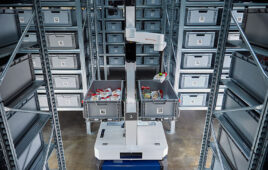
As drone deliveries get faster, they will affect retail, said researchers. Source: The University of Texas at Dallas
After contending with a static consumer demand and regulatory restrictions, aerial drones have found commercial applications in agriculture, construction, infrastructure inspection, real estate, and more. Researchers at The University of Texas at Dallas last week said drones deliveries could enable retailers to offer unheard-of lead times and near-perfect delivery-time customization adaptability.
In a new study, recently published online in Production and Operations Management, three faculty members from the Naveen Jindal School of Management explored how drone delivery could change retail logistics networks. The paper focuses on the use of customer-facing delivery centers, also known as last-mile warehouses.
Dr. Milind Dawande, professor of operations management and one of the paper’s co-authors, said last-mile retail drone deliveries are being viewed as a truly disruptive technology. Retailers worldwide are pursuing approaches to enable faster delivery, and drones arguably represent the most encouraging technological innovation toward this goal, he said.
Drone deliveries may lead to decentralized networks
The study found that both the number of last-mile warehouses and the speed of drone deliveries will increase as technology matures. In other words, last-mile delivery networks will become more decentralized, with drones operating at increasingly faster speeds.

Dr. Milind Dawande. Source: The University of Texas at Dallas
The analysis also showed that while perfect customization of delivery-time guarantees is more profitable, retailers can capture a sizable portion of the profit by partitioning their market into a few zones and offering the best-possible delivery-time guarantee for each zone.
“If a retailer promises each customer a different delivery time based on the customer’s location, that would be perfect customization,” Dawande said. “For example, a retailer could give any customer who is one mile away a delivery-time guarantee of five minutes and a customer 1.5 miles away a delivery-time guarantee of seven minutes.”
“While perfect customization is theoretically best for the retailer, it is impractical. Instead, the retailer might offer all customers less than five miles away a guaranteed delivery time of 15 minutes,” he added. “In other words, limited customization is good enough.”
Faster drone deliveries are more profitable because it implies more demand, Dawande said. Customers’ needs are time-sensitive. For example, if a retailer promises delivery of a book in 15 minutes, the demand is likely to go up, as compared to a three-day delivery promise.
The Robot Report Podcast: Are Amazon drone deliveries coming? And robotics investment trends
The researchers noted that increasing speed of drone deliveries can help improve profitability only if it is accompanied by an increase in the number of last-mile warehouses. Therefore, in congested markets, where the number of warehouses cannot be increased, the retailer may find it best to offer a delivery speed that is lower than the highest-possible speed.
Before drone technology can become widely adopted, however, privacy and safety issues need to be solved, Dawande said, as well as regulations coordinating drone travel and the public perception of fleets of drones flying overhead. The paper points to pilot programs testing the technology.
“It would be reasonable to assume that drone technology is maturing quickly, and we should see a commercial rollout on a larger scale in the not-too-distant future. The COVID-19 pandemic will perhaps hasten this process,” said Dawande, who is also the Mike Redeker Distinguished Professor in Management.

Dr. Ganesh Janakiraman
Drone deliveries might be particularly appealing to customers concerned about both safety and speed, he said. Hands-free delivery to one’s doorstep will be an advantage drones can offer in the post-COVID-19 era.
The analysis is also applicable to other dedicated delivery vehicles, such as delivery robots and electric bikes, which many retailers are testing.
The researchers noted that further research is needed into how last-mile delivery capacity might be allocated between drones and traditional approaches such as delivery trucks.
On the one hand, drone delivery can enable fast delivery times and minimize the cost of human labor by using dedicated aerial vehicles that fly directly from a delivery center to the customer’s location.

Dr. Vijay Mookerjee
On the other hand, delivery trucks have the capability of making multiple stops during a trip. The researchers predict that retailers will use both in order to benefit from their respective strengths.
Dr. Ganesh Janakiraman, Ashbel Smith Professor of operations management, and Dr. Vijay Mookerjee, the Charles and Nancy Davidson Chair in Information Systems, also contributed to the study.
The lead author is former student Sandun Perera, who is now an assistant professor of managerial sciences at the University of Nevada, Reno.





Tell Us What You Think!